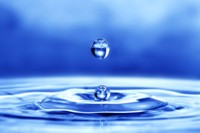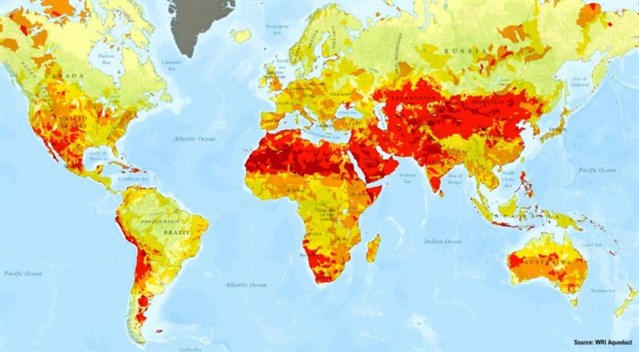5 Sobering Realities About Global Water Security
 Some people say that water is the oil of the 21st Century. If only water were that simple.
Some people say that water is the oil of the 21st Century. If only water were that simple.Water is very complicated. It’s affected by large-scale issues like climate change and globalization. International commerce moves virtual water (the water it takes to grow or produce a product) from farms in Brazil to grocery stores in China and Egypt.
But water is also inherently local, impacted by site-specific weather, geography, and other environmental and land use conditions. Managing and using water, then, requires understanding it in its full geographic context.
WRI is launching its new Aqueduct mapping tool to do just that. Aqueduct provides businesses, governments, and other decision makers with the highest-resolution, most up-to-date data on water risk across the globe. Armed with this information, these decision-makers can better understand how water risk impacts them-and hopefully, take actions to improve water security.
5 Findings about Water
So, what are these global maps telling us? Here are five immediate conclusions:
•
Water risk has many dimensions. WRI’s Aqueduct tool offers a new way of combining and mapping multiple indicators of water stress. Factors like inter-annual variability, floods, droughts, and groundwater depletion are added to baseline water stress, revealing a richer picture of water stress across the globe. Other important factors related to water quality and reputational risk are also included to help companies and governments understand the full breadth of water risks associated with a particular region or water basin. Not only do these layers enrich the overall picture, they can help inform strategies for improving water security.
•
Water stress is growing worldwide. Our new global Aqueduct maps use the most recent 2010 data (previous maps used data from 2000). The picture that emerges shows that water stress is both more prevalent and more severe than estimated in 2000. The new maps reveal areas of higher water stress on every continent, particularly in China, South and Central Asia, and Africa.
•
Water stress isn’t just in arid regions anymore. One of the striking things about Aqueduct’s new maps is that many parts of Europe and the U.S. East Coast and upper Midwest now show medium to high levels of water risk. These regions are not arid, yet they still face significant water stress as demand increases and supply is affected by climate change and other factors.
•
High competition and annual variability make for a bad combination. In some areas with elevated water stress-including the U.S. West, Australia, northern China, northwest India, and parts of Pakistan-there is also high variability in available water supply from year to year. In places where demand for water is high relative to the available supply, a greater likelihood of low-water years makes the situation even riskier.
•
Increasing risks to food security. Most of the world’s water is used for agriculture, which accounts for approximately 70 percent of all freshwater withdrawals. Overlaying the world’s major irrigated crop regions on Aqueduct maps reveals that many of these areas already face significant water stress. The situation may become more severe in the future-water stress is likely to grow due to climate change and increased demand for food and water.

Using Aqueduct to Promote Better Water Management
These are just some overarching conclusions we can draw from Aqueduct’s new maps. Aqueduct is primarily designed to provide companies, investors, and governments with a highly granular, up-to-date, composite view of how water stress affects their specific industries and economies anywhere in the world.
The Aqueduct Water Risk Atlas generates customized water risk maps for nine water-intense sectors-such as agriculture, oil and gas, and mining. Businesses operating in these sectors can look at a picture of global water risk tailored to their industry. The Atlas also allows users to customize risk indicator weightings based on their business or primary concern.
As complex as water is, it’s essential that we start to understand it better if we’re going to have any chance of boosting water security in the future. In the coming months, WRI will be creating more data overlays using Aqueduct maps to look at water risk associated with key food and energy issues. We see this as only the beginning of the important water conversations that need to begin across the world.
You can return to the main Market News page, or press the Back button on your browser.

